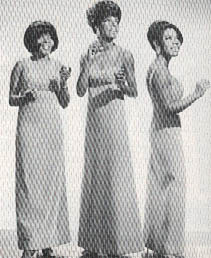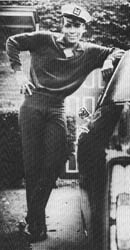[ Previous
| Table of Contents | Next
]
Motown Sound (formulaic; consistency of
musical style):
- lead singer with vocal backup
- strong professional orchestration (strings, brass, sax, keys, & percussion)
- beat is always strong with a heavy backbeat, often reinforced by handclaps
- used bari sax to double bass & provide solos
- predictable harmonic modulation 3/4 through the song
- no real improvisation or deviation from the predetermined arrangement
Formula for success (Gordy insisted on total control, allowing little or no
deviation):
- Holland-Dozier-Holland compositions & production

- Eddie Holland--worked w/vocal leads
- Lamont Dozier--vocal backgrounds & instrumental tracks
- Brian Holland--overall composition, assisting with backup tracks
- lyrics avoided controversy (mostly boy-girl romance)
- choreography by Cholly Atkins; emphasis on synchronized precision
- employed an etiquette coach (how to look, talk, walk, & behave in public)
- vocal coach
concept of "family": assisted each other
in the recording process & relationships developed between performers
Gordy insisted on absolute control

Please
Mr. Postman
(#1, 1961)
- Motown's first #1 hit
- eventually, covered by both the Beatles & the Carpenters
- spawned an interest in female groups
- e.g., Martha (Reeves) & the Vandellas ("Heatwave," #4,
1963; "Dancing in the Street," #2, 1964)
-
early 70s, Reeves fell out of favor when she began questioning
Gordy's distribution of money

- Gaye was a session drummer who toured with the Miracles
- he was also a talented singer/songwriter
I
Heard It Through the Grapevine
(#1, 1968)
- married to Gordy's sister
- Anna Gordy Gaye was 17 yrs older than Marvin
- for Marvin Gaye, the early 70s showed signs of trouble
- bitter divorce from Anna
- IRS pressure
- drugs
- bankruptcy
- 1984 - shot & killed by his own father (a minister, suffering from mental
disease), after threatening suicide numerous times
[ Previous
| Table of Contents | Next
]




